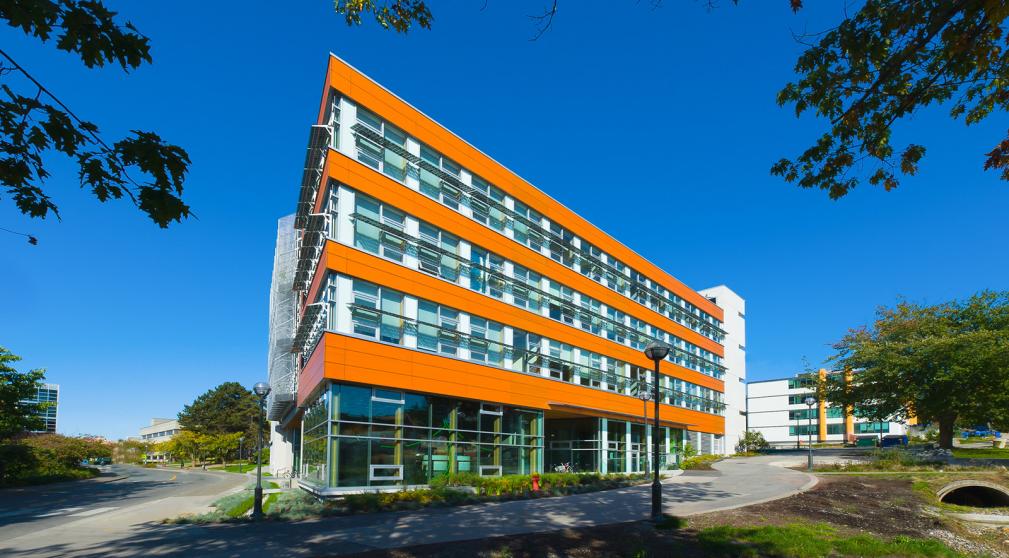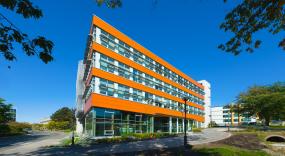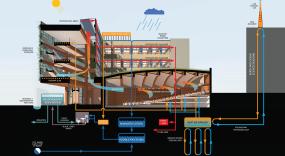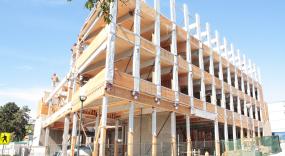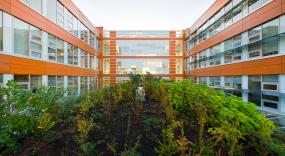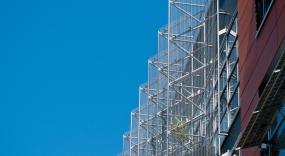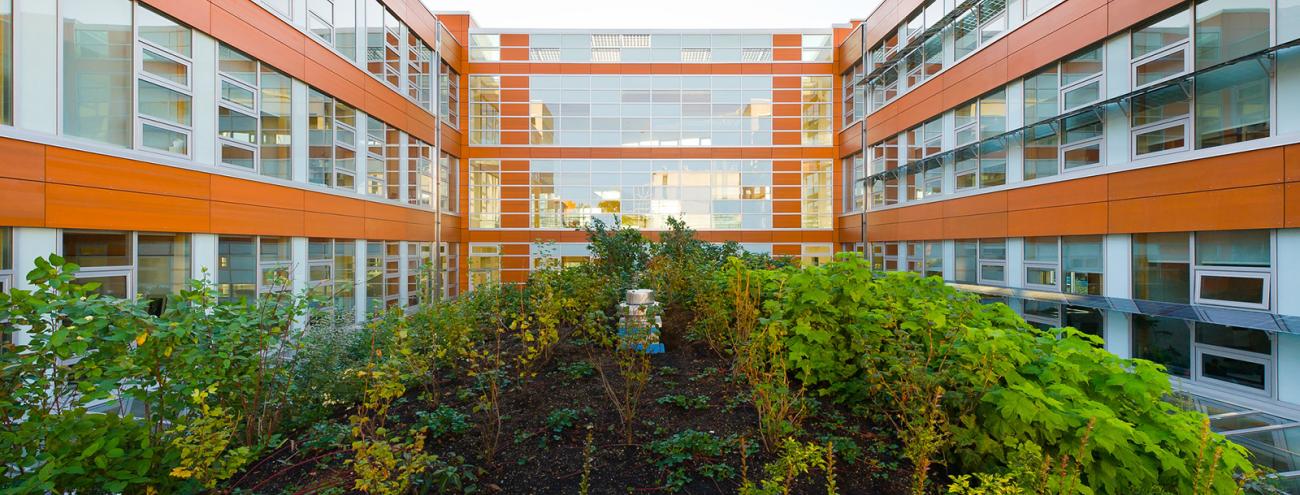
Centre for Interactive Research on Sustainability
The Centre for Interactive Research on Sustainability (CIRS) serves as both a hub for sustainability work on campus, as well as a sustainable building research subject. An internationally recognized interdisciplinary centre, CIRS embodies UBC’s Campus as a Living Lab approach to testing new ideas and sharing knowledge about sustainable building technologies and performance.
Designed on the principles of regenerative sustainability outlined by Dr. John Robinson – the active restoration and regeneration of the environment; and the active pursuit of improvements in the wellbeing of the community – the CIRS project is an opportunity to better understand the practical application of these principles and the implications for long-term performance and building use.
Recognizing that the building project is a work in progress, UBC endeavours to share information from the design, operations and research so that others can learn from the successes and challenges.
Building for net positive
As a flagship demonstration project of UBC’s Campus as a Living Laboratory initiative, CIRS was the first UBC project to comprehensively document the design and construction process, as well as collect data on the performance of the building and engage building inhabitants in research studies.
An academic building, CIRS houses offices, meeting rooms and labs. The building design incorporates passive strategies for daylighting and natural ventilation, and utilizes a combination of renewable and innovative energy systems, including a geothermal system, photovoltaics, solar thermal hot water and heat exchange with an adjacent building.
The building structure is a hybrid of concrete and mass timber, with glue-laminate (glulam) columns and beams, and floors of lumber decking sourced regionally from pine-beetle infested forests. While the structural integrity of the wood is not compromised, trees killed by the pine beetle are a major fire hazard for Western Canada. The wood in CIRS is estimated to sequester the equivalent of 600 tonnes of carbon dioxide.
Landscaping and proximity to nature are key components of building design. The building is surrounded by natural plantings and the landscape is designed to channel stormwater runoff into the local aquifer. A living wall on the west facade provides seasonal solar shading. A living roof with local and adaptive plants creates a habitat for insects and birds.
CIRS has achieved Canada Green Building Council's LEED Platinum certification and obtained a number of sustainability and high-performance awards. More information on the design of the building and systems can be found in the CIRS Building Manual (see resources below).
Take a guided video tour
A short guided tour featuring interview with Dr. John Robinson, including insights about a waste heat recovery system from a neighbouring building.
Interdisciplinary research
CIRS is home to a variety of sustainability-related research and educational groups, as well as planning and operations departments that develop and implement sustainability actions on campus.
The building is also equipped with a robust network of sensors and controls to optimize and document building performance, and the data supports research projects on topics such as renewable energy technology, system optimization, water reuse, performance gap and inhabitant behaviour.
Resources
Partners
Infrastructure and Development, UBC Facilities
is responsible for the planning, development, renewal and renovation of campus facilities and infrastructure. They provide stewardship for all institutional facilities projects.
Energy & Water Services
generates, distributes and conserves UBC’s energy and water resources by maintaining environmental comfort, ensures system reliability, minimizes life cycle cost, reduces GHG emissions, and seeks out innovative solutions.
